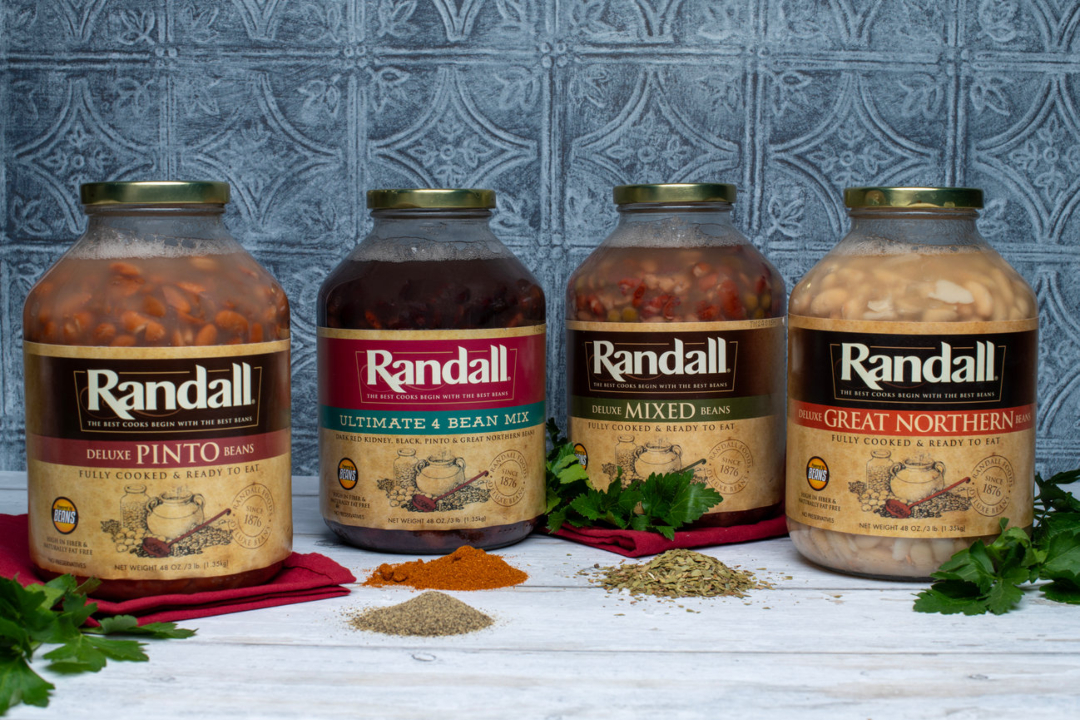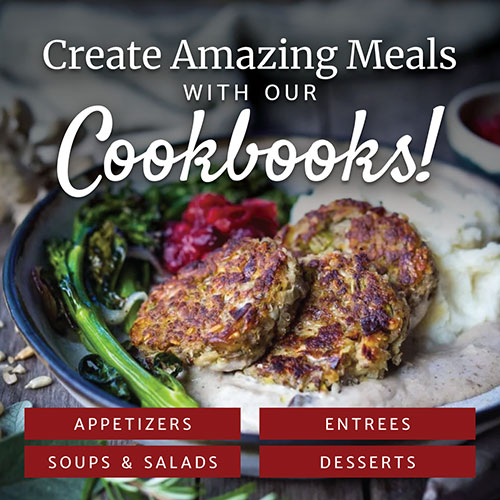s
At Randall Beans, National Beans Month is one of our favorite months. After all, when else do you have an excuse to celebrate one of the most nutritious, versatile, healthy, cost-effective, and delicious foods on the planet?
If you’re looking forward to making all of your favorite bean-centric dishes this summer, join us in appreciating (and eating) this tiny little miracle food!
1. July is National Beans Month.
There’s a good reason that traditional Fourth of July cookouts include baked beans as a side dish. Not only are baked beans a crowd favorite, but the month of July is both National Beans Month in general and National Baked Bean Month in particular.
(Not to be confused with National Bean Day, which is January 6th!)
How fortuitous that the two beaniest national holidays of the year overlap for an entire month! That means for every cookout party and summer picnic you host or attend you have the perfect reason to cook one of your favorite baked beans recipes.
2. Beans are healthy (and versatile!) enough to eat for an entire month.
We’re not recommending that you make a huge vat of baked beans and eat only that for a whole month. That sounds boring, and, frankly, a varied diet is more likely to be healthy.
Instead, try several different bean recipes, experiment with your own, and find your favorites! Our website has many recipes and downloadable cookbooks with nothing but beans as the star attraction. We also have a printed cookbook with more than 100 bean-based recipes that span from appetizers to desserts!
Try these suggestions to get you started:
- Summer White Bean Salad
- Pinto Bean Tamale Pie
- Poblano, White Bean, and Chicken Chili
- White Bean Rosemary Loaf Bread
- Pinto Bean And Rice Stew
- Pinto Bean Quesadillas
- White Bean Chocolate Ice Cream
- Pinto Bean Chocolate Cake
- White Bean Cupcakes
As you can see, beans can be used in breakfasts, lunches, appetizers, dinners, and even desserts! There’s a whole world full of cultural bean dishes to explore.
Here’s the bonus you get from eating beans. They’re considered a superfood because of their nutritional benefits. They’re full of protein, fiber, folate, and potassium, they’re great for your brain, digestion, cancer prevention, and heart health, and you’ll be getting lots of fresh vegetables, nutrient-rich herbs, and (as long as you’re not vegan) plenty of meat and cheese to add some animal protein and a savory pop of flavor.
If you don’t believe us about the amazing nutrition of beans, check out this nutrient breakdown of Pinto Beans and Great Northern Beans.
3. There’s so much to appreciate about the cultural history of beans.
Almost every culture around the world incorporates beans into their diets. With a wide variety of cooking styles, local herbs and spices, and preferred ingredients from region to region, the number of different cultural bean dishes is amazing.
National Bean Month is an opportunity to share traditional recipes between cultures to learn how people around the world feed their families.
Travel to the mountainous slopes of ancient Lebanon and Syria with this Tabbouleh Salad, try an Irish classic Colcannon, journey to Italy with this Tuscan Skillet Meal, or sink your teeth into some Texas Chili Fries. You can sample the entire world from your dinner table if you have enough jars of beans and an open mind!
4. You can use beans for more than just food!
Think beans are only for eating? Think again!
Where do you think the phrase “bean bag chair” comes from? That’s right—dry beans can be used to create stuffing for furniture! Some cultures also use them as beads for jewelry and as a delightfully percussive filling for musical instruments such as Maracas and the African kashishi.
Plenty of cultures also use dry beans as the filling for toy rattles. This is great, as long as the beans are completely encased in a structure the child cannot open. If you decide to DIY a baby rattle, make sure your kids don’t have access to the dry beans themselves and that the beans are not exposed. Dry beans swell when exposed to moisture, and kiddos love sticking small objects in their mouths. This combination means beans are a choking hazard for babies and toddlers.
However, if you have older children who are past the choking hazard stage, feel free to set them up with a tray of dry beans, some paper and glue, and/or other craft items of your choice. It’s almost impossible for kids to not be inspired by the sheer possibilities of bean jewelry, bean decorations, and bean-encrusted picture frames. Just be sure you have ample space to display their beautiful artwork!
5. Beans are a good luck symbol for marriage.
Some people throw rice after a couple exchanges their vows, but other cultures recognize the good health and prosperity that beans can bring! In Nicaragua, for example, newlywed couples are given beans for good luck as they start their journey together into married life.
Beans are technically a seed. Plant a seed in the ground, and a new plant will grow. The thought is that by presenting newlyweds with a bowl of beans, you’re offering hope for a fresh beginning.
6. The history of baked beans goes back longer than you think!
Beans arrived in Europe around the 16th century, and the first recipes for baked beans started circulating around the 17th century. That means Europeans—and future generations of Americans—have been eating beans for more than 500 years.
In fact, when Christian pilgrims arrived on North America’s shores and began to settle, they were taught many recipes from Native Americans who had been preparing and surviving on beans as a staple crop. That means beans were probably at least partly responsible for the history and survival of America as we know it.
Canned baked beans first appeared in the 1860s. In 1886, Heinz began selling them to U.K. consumers. In 1895, Heinz started mass-producing baked beans, and a global favorite dish was officially born.
If you’d like to learn more about the history of baked beans, check out the historical timeline on this page!
7. How do you actually celebrate beans during National Beans Month?
You don’t have to dress up in a bean costume, wear bean jewelry, and recite random bean facts to your friends and coworkers (though you can if you want—but that’s just us).
You can appreciate these little morsels of goodness by trying new bean recipes, eating beans in lots of creative dishes, and simply appreciating how economically (and deliciously) you can feed yourself and your family with beans as a primary pantry staple.
We recommend exploring the rich global heritage of beans to experience how different cultures use and eat beans in everyday life. Sample enough traditional cuisine from cultures around the world, and you’ll understand how beans became a go-to favorite when economic times got tough. There are so many creative things you can do with beans that we bet you could eat them every day for a year and never repeat the same recipe twice!
If you choose to share your Bean Month festivities online, use the hashtag #BakedBeanMonth so other food enthusiasts can search for your posts, swap recipes, and find bean-related dinner inspiration. (Bean-spiration?)
And if for some reason the mood strikes…
Regardless of how you choose to celebrate, Randall Beans wishes you a happy and healthy Bean Month filled with all the delicious foods and family dinners you can possibly eat. Cheers!

